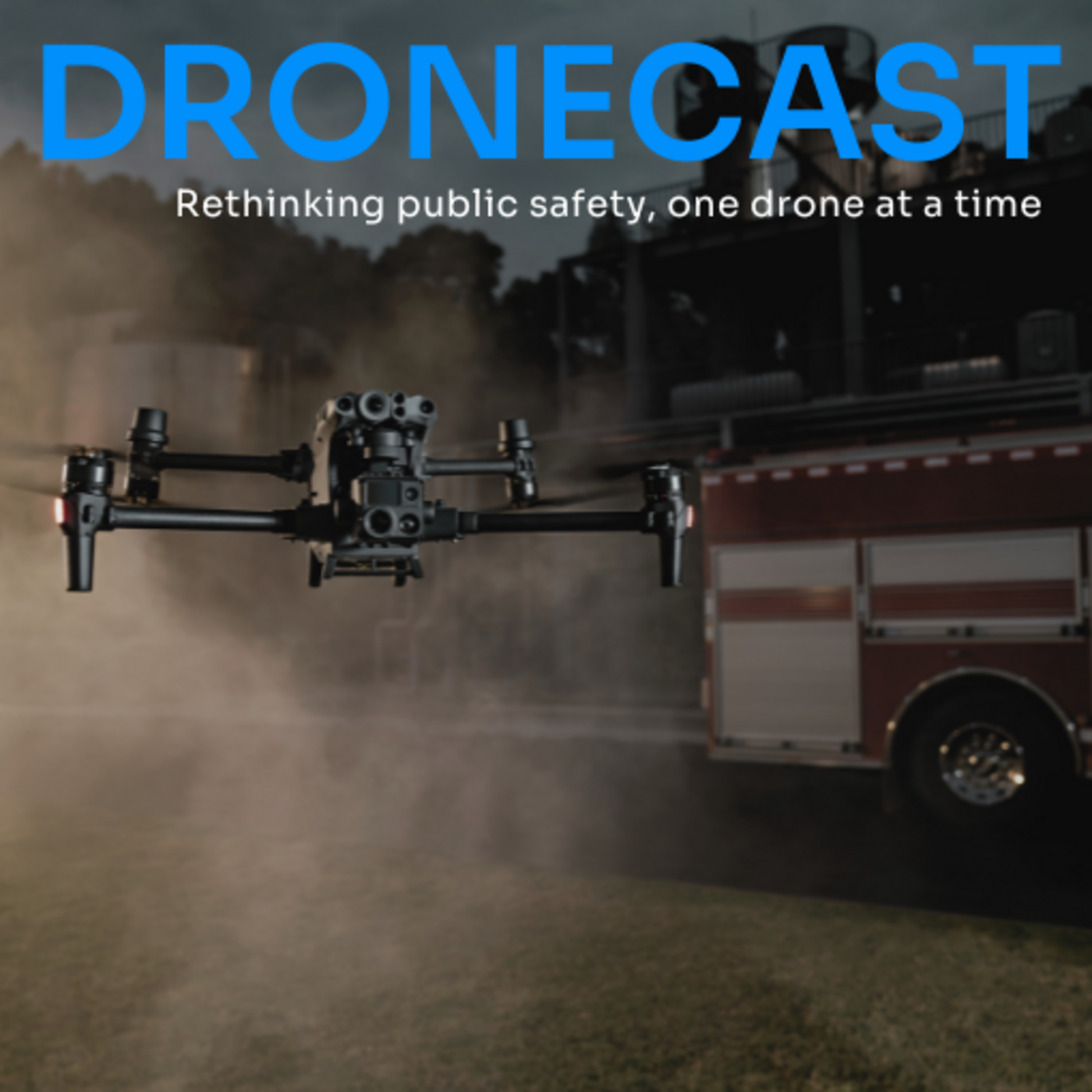The COA Liability Trap: A Critical Warning for Public Safety Drone Programs with Greg Reverdiau
July 22, 2025

In Part 2 of this impactful DroneCast conversation, host Joe Kearns continues the discussion with Greg Reverdiau, co-founder of the Pilot Institute, diving deeper into the human side of public safety drone operations. Greg unpacks the importance of building a proactive safety culture, training for beyond visual line of sight (BVLOS) operations, and preparing teams for the integration of advanced sensors and future technologies. This episode equips public safety drone leaders with strategies to foster resilience, decision-making under pressure, and long-term program success in an evolving regulatory landscape.
In Part 2 of this compelling DroneCast series, host Joe Kearns reconnects with Greg Reverdiau of the Pilot Institute to explore the next phase of public safety drone program development—one rooted in safety culture, human factors, and future-readiness.
Greg brings over two decades of experience as a flight instructor and holds a master’s degree in aviation human factors. As the co-founder of the Pilot Institute, he has helped thousands of drone pilots—from career changers to public safety professionals—transition into successful roles through structured, comprehensive training programs. Known for his deep expertise in FAA regulations, safety management systems, and instructional design, Greg’s approach centers on transforming drone operators into aviation professionals who understand both the technical and human elements of flight.
In this episode, Greg outlines how public safety agencies can move beyond technical training to develop pilots who think and act like aviators. He emphasizes the importance of a proactive safety culture that encourages incident reporting without fear, the necessity of fatigue and stress management, and the crucial role of community knowledge sharing.
The conversation delves into the nuances of tactical BVLOS operations, advanced sensor training, and the challenges of integrating drone-generated data into existing public safety systems. Greg also explains the evolving regulatory environment and how agencies can align with both Part 107 and Certificate of Authorization (COA) frameworks.
This episode offers a forward-looking perspective for agencies striving to enhance the effectiveness, safety, and adaptability of their drone programs—arming leaders with the insights they need to navigate the intersection of technology, people, and policy.
What You'll Learn:
- How to build a proactive safety culture that encourages incident reporting without fear of punishment
- Why tactical BVLOS operations require specialized training and risk mitigation
- The “Aviator Mindset” and how it transforms basic operators into aviation professionals
- The importance of fatigue management and stress control in high-stakes drone operations
- How to incorporate advanced sensors and data into public safety workflows
- Why standardized training is critical—even as drone autonomy increases
- How to prepare for regulatory shifts and emerging technologies in the drone space
- The differences between operating under Part 107 and COA—and why it matters
- Strategies for continuous learning and leveraging shared knowledge across agencies
- How to ensure seamless integration of drone operations into broader public safety infrastructure
Helpful Links:
- Fill out the Audience Form here.
- Explore more episodes and insights on the official DroneCast website: dronesense.com/dronecast
- Ready to launch or enhance your drone program? Get Started with DroneSense today!
Episode Highlights:
- [13:00] Building a Non-Punitive Safety Culture
Greg introduces the concept of a Safety Management System (SMS) that encourages open reporting of incidents without fear of punishment. This approach is critical for public safety drone programs because it allows teams to learn from mistakes and prevent future accidents. The key is creating an environment where operators feel safe reporting issues anonymously, focusing on understanding what happened rather than who was responsible. Departments should implement formal reporting systems, like the NASA ASRS program, to collect and share safety data across the industry. Making incident reporting non-punitive and sharing lessons learned helps build institutional knowledge and creates a stronger safety culture.
- [26:45] Managing Fatigue in Drone Operations
Greg emphasizes that fatigue management is especially critical in public safety drone operations where long incidents are common. Many operators falsely believe they can effectively function while tired, but research shows fatigue significantly impairs decision-making and reaction times. Departments need robust staffing plans and clear policies about maximum flight times and required rest periods. Setting strict operational limits and having backup pilots available helps maintain safety during extended missions. Regular training on fatigue awareness and its effects on performance is essential for all drone operators. - [35:00] The "Aviator Mindset" Framework
Greg shares his philosophy of developing drone operators into true "aviators" rather than just pilots. This mindset shift involves understanding the entire aviation ecosystem, including other aircraft, airspace considerations, and potential risks. Proper training should go beyond basic drone control to develop complete situational awareness and professional judgment. The approach helps operators make better decisions and maintain safety in complex environments. This comprehensive understanding is especially critical as drone operations become more autonomous and integrated into the national airspace. - [44:30] Evolution of BVLOS Operations
Greg discusses how beyond visual line of sight operations represent the next major advancement in public safety drone programs. While BVLOS capabilities will dramatically expand operational possibilities, they also introduce new risks that must be carefully managed through training and technology. Operators need enhanced situational awareness tools and a thorough understanding of aircraft detection and avoidance procedures. Departments should start preparing now by developing BVLOS training programs and safety protocols. The key is balancing the operational benefits with maintaining the highest safety standards.
Dronecast: Rethinking Public Safety, One Drone at a Time Podcast is handcrafted by our friends over at: fame.so
Previous Guests include: Matt Rowland, Jason Burnside
Check out our 3 most downloaded episodes:
Previous Guests include: Matt Rowland, Jason Burnside
Check out our 3 most downloaded episodes: